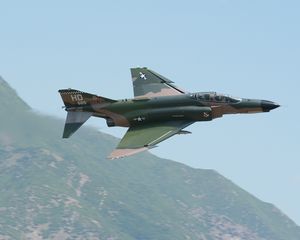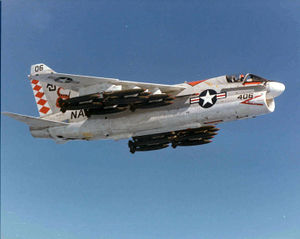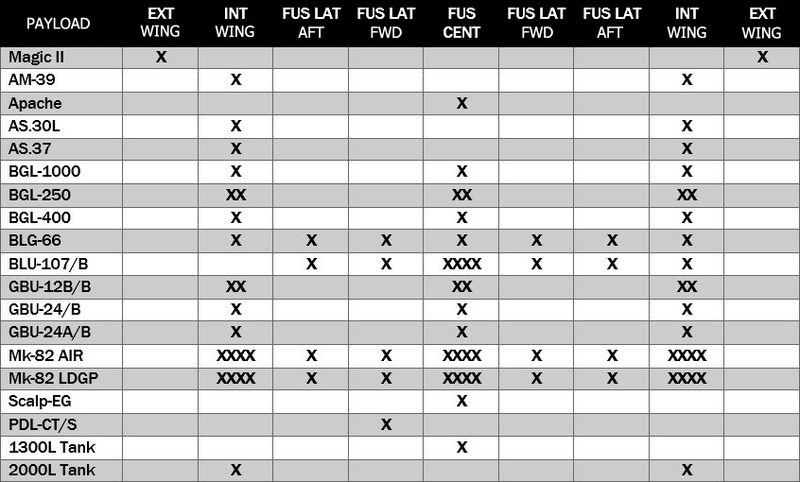Specialty aircraft
Contents
Learning objectives
- Set up keybinds
- Understand special nuances for specialty aircraft (e.g. pit limitations)
- Understand flight model for specialty aircraft
- Know how to load an F-16 pit for specialty aircraft operations
A-10
Has its own pit.
F-4 Phantom II
- Flaps are necessary for the Phantoms, default is CTRL+F11/F12 to open and close. You will see the flap status at the top left of the screen.
- Visibility through the HUD is poor. You can recenter your TrackIR by ducking your head and recentering; this helps a bit.
- Press Shift-H to toggle the DED to the HUD. You will need this for advanced settings like TACAN, BINGO, etc.
- Requires custom binding for countermeasures (CKPIT: Drop Chaff/Flares): 'Ctrl ,' and 'Ctrl .'
- TACAN and ILS works sort of
- Turn on ILS knob with Shift-ALT-Y
- Cycle mode with I or knob to right of HSI
- Make sure you configure your defaults to push the DED to the HUD (use WDP)
- Note: CNI does NOT work, so you will not be able to line up with radials using HSI
- Note: CMD STRG for ILS approaches push to the HUD, like the F-16
F-14 Tomcat
Carrier aircraft. Can carry the Aim-54 Phoenix long range missile. Has a poor 2D pit. Requires the hook to be bound as there is no cockpit button, unless you are using the F-16 cockpit.
F-111 Aardvark
- Flaps are necessary for the Aardvark, default is CTRL+F11/F12 to open and close
- Fuel consumption is higher than the F-16. Estimate 15-20 lbs of fuel per mile for JOKER/BINGO calcs. And ease off the afterburner.
- Often gets a TRP (Fuel Trap) warning. Maximize the throttle and reduce to clear the issue.
F/A-18
- Carrier aircraft. Has a high quality and functional pit.
- See http://www.unitedoperations.net/wiki/Carrier_operations for carrier operations
A-7 Corsair II
Carrier aircraft. Uses F-16 pit by default. Need to bind tail hook and flaps. CTRL-F9, CTRL-F10 for flaps.
This thing does not catch the catapult. It also only knows two throttle speeds: full and off. This makes things challenging when taxiing. To take off, get lined up between and behind the catapult by about 50 feet, drop full flaps, full throttle and take off. You may hear some loud grinding, that seems to be normal. Just raise your gear and carry on.
The flight model is not realistic; it has an instantaneous turn rate of 60 degrees.
To land, lower flaps fully, drop the tail hook and the gear, slow down to about 150 kts and catch the wire.
Mirage 2000
Mirage 2000-5F
Description
This is the Air superiority version of the Mirage. Equiped with the RDY radar it is Fox3 capable and it is equiped with link 16 and an internal jammer
Loadout
Mirage 2000-D
Description
This Mirage is a true mudmover ! This version is dedicated for ground attack only. Equiped with the Antilope V radar it has been made for NOE incursion and precision strikes it also have an internal TFR and an insane amount of chaff & flares ! Like the -5 it is equiped with Link 16 and an internal jammer. It can carry a great variety of weaponry from iron bombs to cruise missiles or LGB.
In return the radar of the 2000-D have almost no air to air capabilities. (It is limited to CAC only - no BVR)
An other really important aspect is that some stuff have been removed from the airplanes to make room for new computers.
- First one are the guns !!! yes the guns !!! so no straffing runs with this airplanes !
- Second are the "moteurs de souris" those are small electrical engines moving forward and aft the small conical shapes inside the air intakes. (If you want an aircraft to be supersonic you have to break the sonic shockwave before it enters inside the compressor of your engine) This means that the mirage 2000-D is subsonic (in fact it's slightly supersonic) but it is not really important as this planes is always equiped with the 2000 Liters droptanks and those tanks are not supersonic capable either
Loadout
{{#invoke:Navbox|navbox}}





